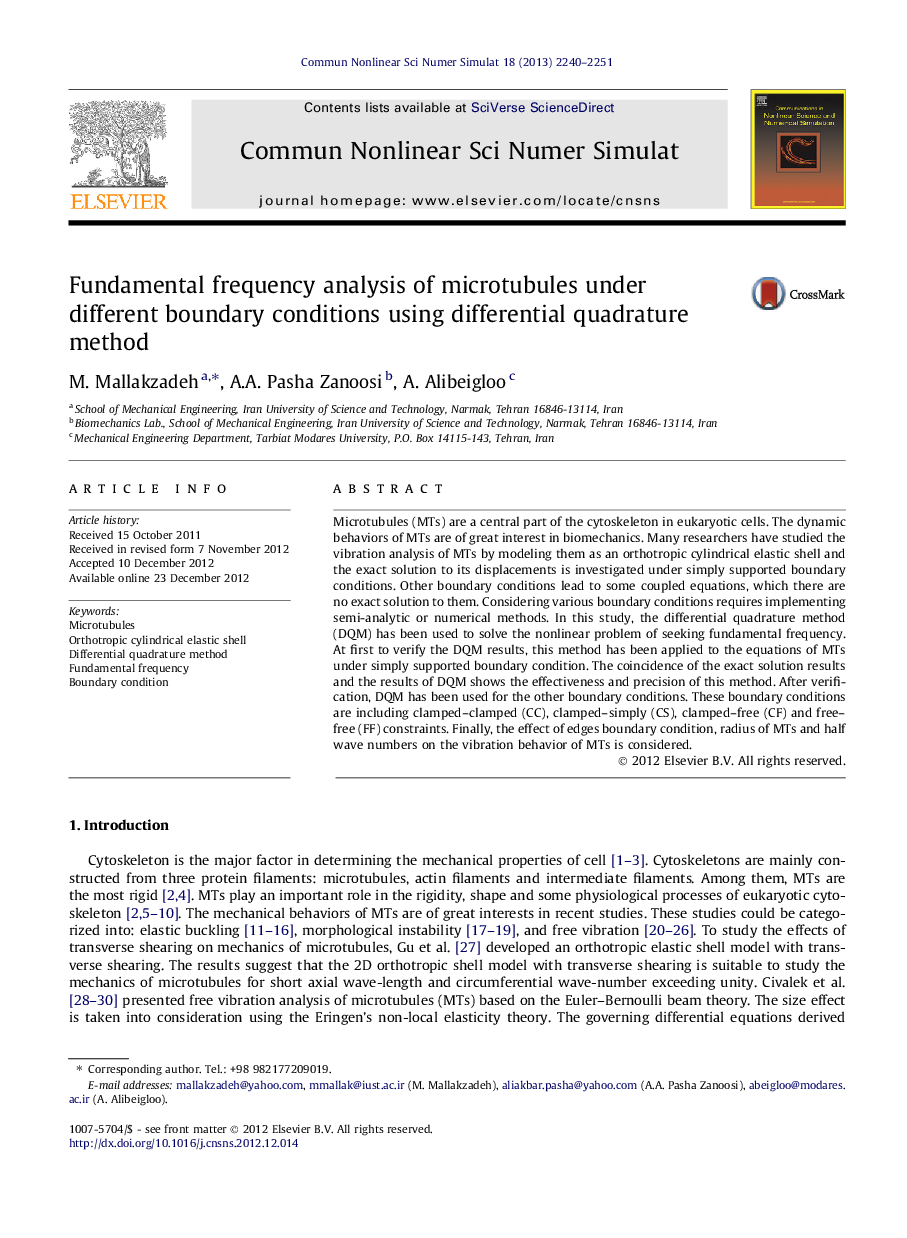| Article ID | Journal | Published Year | Pages | File Type |
|---|---|---|---|---|
| 766851 | Communications in Nonlinear Science and Numerical Simulation | 2013 | 12 Pages |
Microtubules (MTs) are a central part of the cytoskeleton in eukaryotic cells. The dynamic behaviors of MTs are of great interest in biomechanics. Many researchers have studied the vibration analysis of MTs by modeling them as an orthotropic cylindrical elastic shell and the exact solution to its displacements is investigated under simply supported boundary conditions. Other boundary conditions lead to some coupled equations, which there are no exact solution to them. Considering various boundary conditions requires implementing semi-analytic or numerical methods. In this study, the differential quadrature method (DQM) has been used to solve the nonlinear problem of seeking fundamental frequency. At first to verify the DQM results, this method has been applied to the equations of MTs under simply supported boundary condition. The coincidence of the exact solution results and the results of DQM shows the effectiveness and precision of this method. After verification, DQM has been used for the other boundary conditions. These boundary conditions are including clamped–clamped (CC), clamped–simply (CS), clamped–free (CF) and free–free (FF) constraints. Finally, the effect of edges boundary condition, radius of MTs and half wave numbers on the vibration behavior of MTs is considered.
► An orthotropic cylindrical elastic shell model of microtubules is presented. ► Frequency analysis of microtubules is practiced using differential quadrature method. ► Exact solution results under simply supported boundaries compared by that of DQM. ► Effects of different boundaries on microtubules fundamental frequency are presented. ► Radius and photon dispersion effects on microtubules frequency are discussed.
